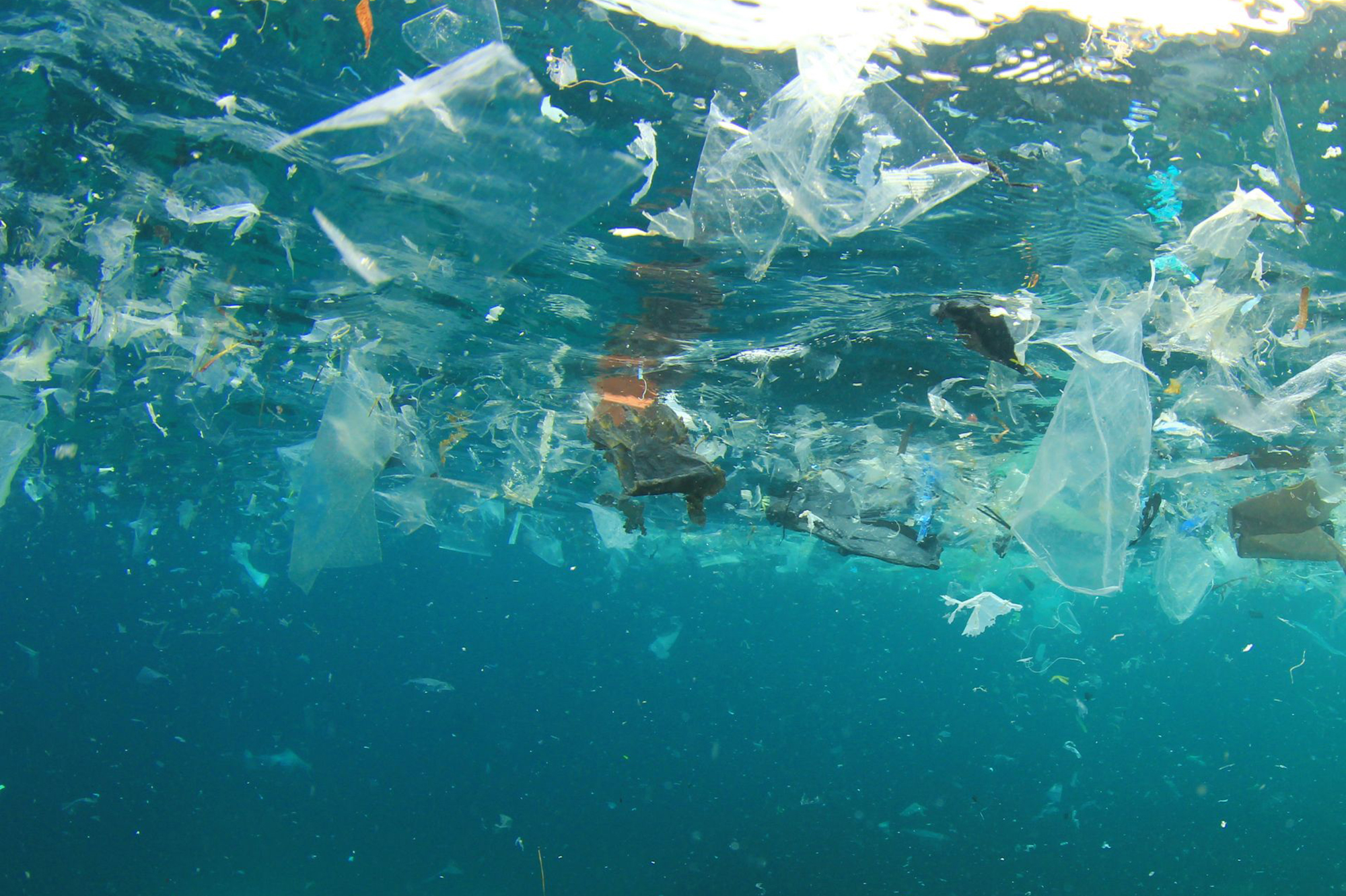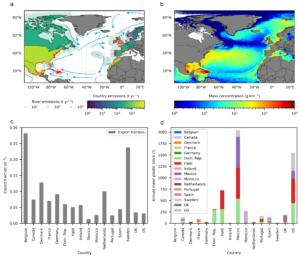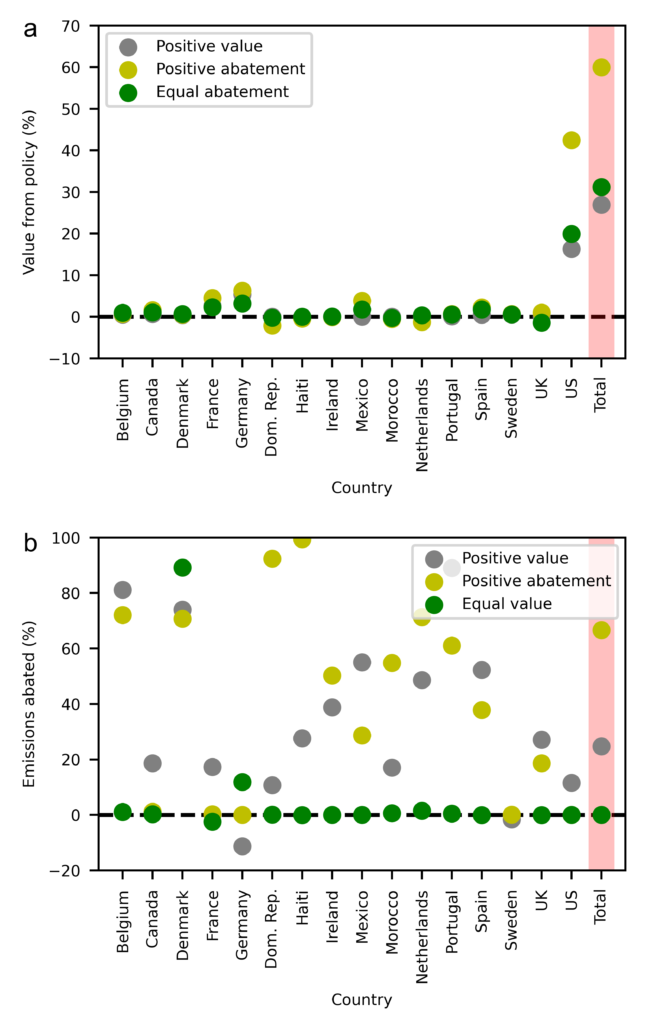Story
Cooperation between countries could reduce marine plastic pollution in the North Atlantic but with unequal economic benefits
14 March 2025
A new study shows cross-country collaboration in tackling marine plastic pollution yields significant economic and environmental returns, which could be up to $36B with a 64% reduction in emitted plastic for countries bordering the North Atlantic. However, the distribution of these benefits may not be equally shared.

As nations around the world negotiate a global plastics treaty, a legally binding agreement that aims to end plastic pollution, a group of scientists explored how collaborative action may affect nations that border the North Atlantic Ocean.
To the best of the authors’ knowledge, this research is the first to combine ocean and economic models to establish the benefits of coordinated plastic pollution management across multiple nations sharing an ocean border.
The study focuses specifically on floating macroplastic (larger than 0.5 cm) entering the marine environment via rivers, and contributes important evidence to ongoing global efforts to address the estimated 4.8 to 12.7 million metric tons of plastic that enters the global ocean annually, threatening marine ecosystems and biodiversity worldwide.
Dr James Clark, Marine Ecosystem Modeller at Plymouth Marine Laboratory and lead of the ocean modelling work in the study, commented:
“Ocean currents can carry marine plastic pollution 1000s of kilometers from the location where it first entered the marine environment. This is evidenced by the accumulation of plastic in the sub-tropical gyres of the open ocean, and the presence of plastic on the beaches of small remote islands. Ocean models allow us to study how the combination of spatially-varying plastic inputs and ocean currents impact the concentration of plastic both in the global ocean as a whole, and the territorial waters of different countries.”
Using data on plastic emitted via rivers with state-of-the-art models of the ocean and atmosphere circulation, the authors simulated the movement and spatial distribution of plastic in and around the North Atlantic Ocean. These simulations were used to estimate the contribution of each country to the stock of plastic in the territorial waters of all other countries.
The team then combined the results of the ocean modelling with economic valuation and game-theoretic analysis to assess the benefits of cooperation between 16 North Atlantic nations, including the UK, US, Canada, Mexico, Morocco, Haiti, the Dominican Republic and several western European countries.

Co-author, Prof. Nicola Beaumont, Head of Science for the Sea and Society group at Plymouth Marine Laboratory and lead of the Society and Regulation pillar of the North Atlantic Microplastic Centre (NAMC), said:
“The connected nature of the marine environment suggests that coordinated actions by countries sharing an ocean border may provide more effective pollution control than unilateral actions by any one country.”
The authors calculate that, subject to modelling uncertainties, a fully cooperative agreement yields annual net benefits of around $36 billion and an approximate 64% reduction in emitted plastic.
The study also demonstrated that while cooperation would yield substantial overall benefits, these benefits would be distributed unequally. Some nations might even experience net economic losses without additional compensation mechanisms. These arise due to differences in i) the amount of plastic litter entering the marine environment from each country, ii) the net transport of litter between countries, and iii) the ability of each country to pay to reduce levels of plastic in the marine environment.
When examining the impact of different political constraints, it was concluded that the least damaging constraint in terms of both overall macroplastic pollution reductions and net economic benefits is that of ensuring no country is allowed to increase its baseline emissions.

In the emissions data used within the study, the UK is a relatively large emitter of plastic compared to other European counties. The study found that plastic emitted by the UK is transported to and through the waters of countries bordering the North Sea. Some of this plastic is eventually transported towards the Arctic.
Prof. Beaumont added:
“Our research provides timely insights as the UN Intergovernmental Negotiating Committee works toward an international legally binding instrument on plastic pollution. We’ve demonstrated that cooperation can deliver significant environmental and economic benefits, though careful policy design is needed to ensure fair distribution of these benefits.”
The new research was a collaborative effort between oceanographers and social scientists at Plymouth Marine Laboratory, and economists from University of Aberdeen, University of Glasgow, the Berlin School of Economics in Germany and Clark University in the United States.
Related information